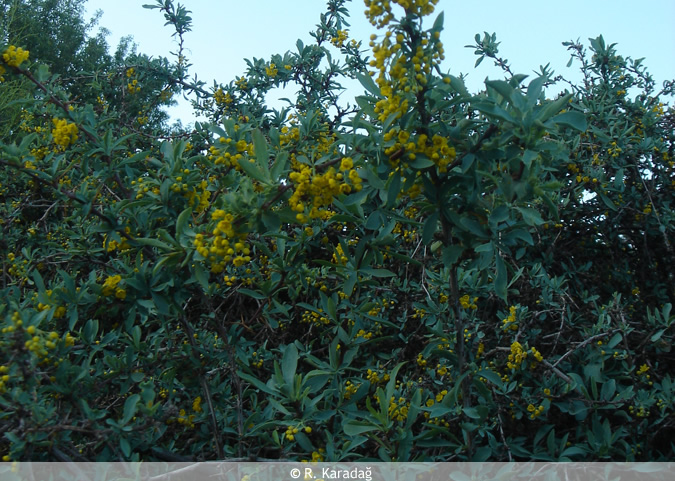Berberis crataegina is a bush about 6 feet high with short thorns that blooms from May to June with many clusters of 6 to 15 yellow flowers. The berries are first red and then turn black.Throughout Nouthwestern Asia on stony slopes from 2,600 to 5,000 feet . In Northern Turkey , there occur varieties that have crossed with the European barberry, Berberis vulgaris, which grows there. It is characterized by hanging clusters of flowers. In Southwestern Turkey , Berberis crataegina is replaced by Berberis. cretica, which has only 4 to 10 flowers per cluster.Historical Data
This barberry has been repeatedly mentioned as a dye plant in Turkey (Korur 1937, Esberk 1939, Mairet 1916). During World War I, the tents of the Turkish army were dyed with it. Into the last half of the 20 th century, its bright yellow roots were still sold there to make dye. European sources document the use of barberry as early as the 14th century (Cannon 1994, p. 78). A barberry from a different genus, Mahonia japonica SPRENG., has been cultivated in Japan for several centuries but came originally from China . This evergreen tree grows to ten feet. Its bark is the main source of the dyestuff berberin.

